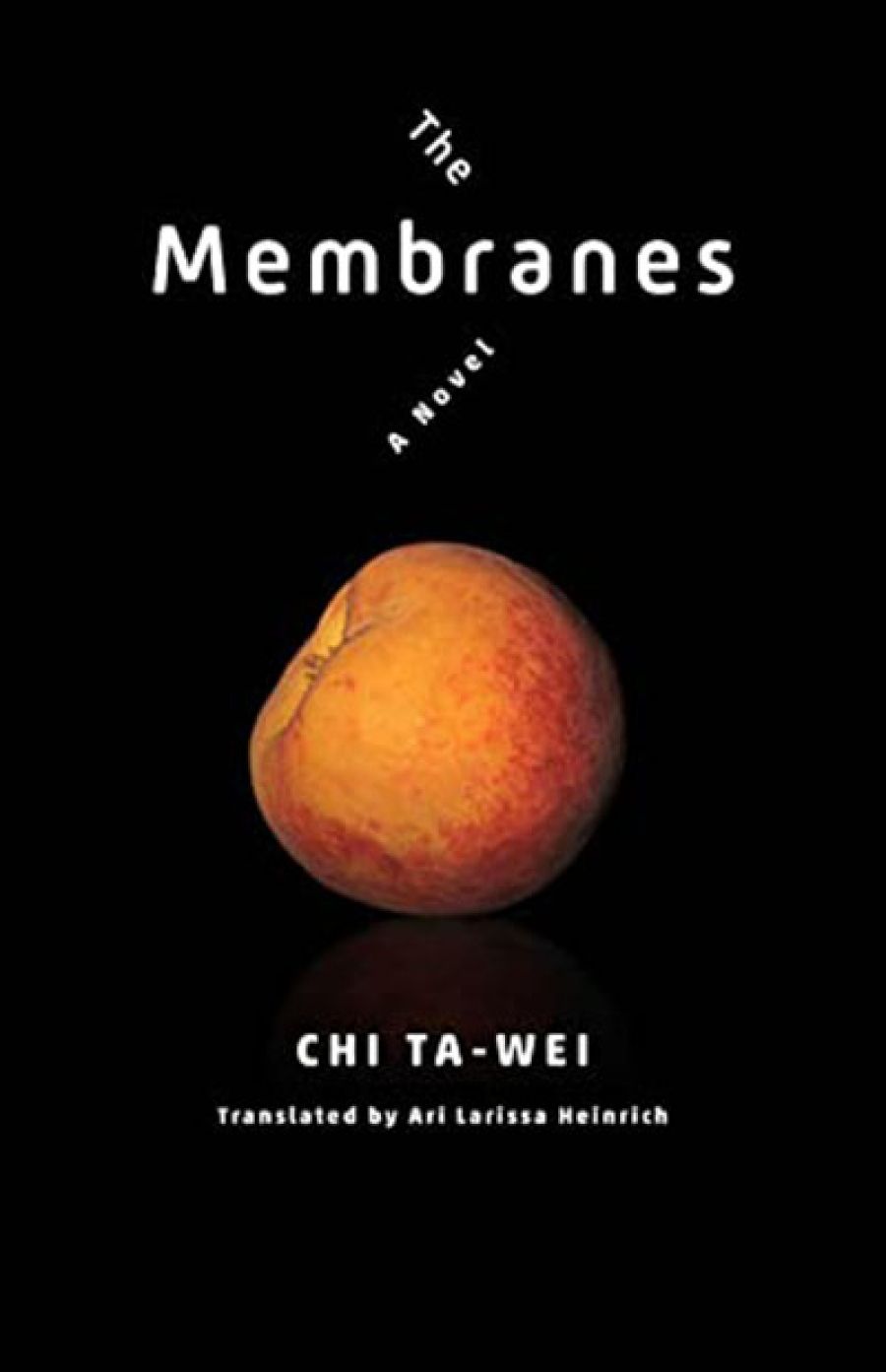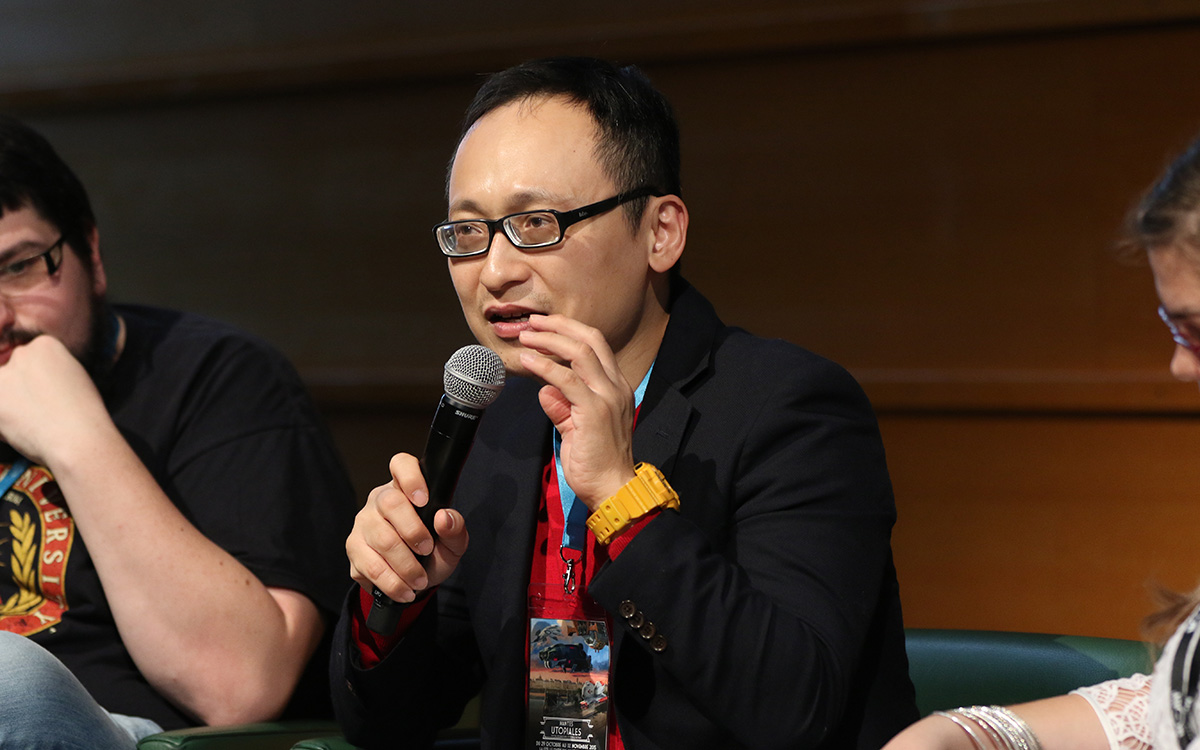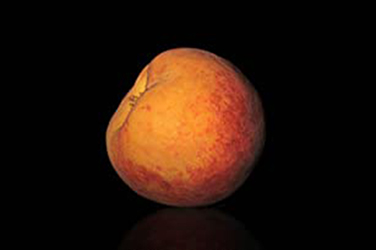
- Free Article: No
- Contents Category: Fiction
- Review Article: Yes
- Article Title: A finite jest
- Article Subtitle: Chi Ta-wei’s dystopic novel
- Online Only: Yes
- Custom Highlight Text:
It is 2100, and the states of the world have divvied up the ocean floor, constructing domed cities in which humanity, such as it is, survives. The earth’s irradiated, unliveable surface is the haunt of adventure tourists and archaeologists, the battleground of military androids watched on screens by the humans at the bottom of the sea.
- Article Hero Image (920px wide):

- Article Hero Image Caption: Chi Ta-wei at the 2015 ‘Les Utopiales’ international festival of science fiction in Nantes (photograph by Yves Tennevin, courtesy of Wikimedia Commons)
- Featured Image (400px * 250px):

- Alt Tag (Featured Image): Josh Stenberg reviews ‘The Membranes: A novel’ by Chi Ta-wei, translated by Ari Larissa Heinrich
- Book 1 Title: The Membranes
- Book 1 Subtitle: A novel
- Book 1 Biblio: Columbia University Press, US$17 pb, 160 pp
The protagonist of Chi Ta-wei’s 1996 short novel The Membranes lives in New Taiwan. She is a dermal care technician, and the novel takes place in her mind and on her body. Her name, Momo, comes from the Japanese word for ‘Peach’, because, as her mother explained to her, it is from a peach that she sprang as a baby. But her mother has been absent for twenty years, preoccupied by her work as an executive at MegaHard (read: Microsoft). Momo’s expert skin treatment, a kind of membrane that must be replaced weekly, has won her rich clients and renown, not to mention a creative cosmetics prize for turning a customer into a canary. As the novel progresses, we are privy to Momo’s flashbacks – childhood in a hospital, a crucial surgery, vanishing android friends, her rebuff of intimacy, her struggle for professional success. Isolation suits Momo’s personality, but even so she has begun to question what she’s been told about herself. Now, as Momo approaches her thirtieth birthday, her mother announces a visit.
In a translator’s postface, ANU Professor Ari Larissa Heinrich deftly places the novel’s hectic collage of references and its characters’ gender fluidity into the context of Taiwan’s eclectic 1990s, when the end of martial law produced a culturally omnivorous, formally daring generation of writers. Chi and his cohort mixed unfettered allusiveness with a suspicion of national narratives and gender norms, a deliberate and dramatic break with the orthodoxies of realism and patriotism. Vocal and well-known as a gay public intellectual and activist, Chi went on to earn a PhD in comparative literature from UCLA and to establish a successful career as a literary and culture critic. Little wonder, then, that the narrative can read as playfully academic, packed with cultural references for the sheer buzz of heterogeneity. One way of taking the novel, given its modest length, is as an entirely finite jest, full of verve and foreboding.
The novel succeeds on the strength of its recognisable and perturbing setting and central conceit. It offers an original, entertaining, and fast-paced vision, translated from Chinese with perfect pitch, and can be pleasantly devoured in a single sitting. Some aspects of Chi’s future are familiar, a resemblance accentuated in our pandemic times – the solitude, the ersatz digital society with its illusion of universal access to information. Other features are surprising throwbacks: the protagonist still resents the intrusion of a video call, and the dominant reading practice is the disc. The narration is characterised by a deliberate, sometimes claustrophobic interiority, a cycle of constant recursive memories, with Derrida duly cited. Disbelief is not so much suspended as cast to the winds, since the premises do little to explain the mechanics of a world in which babies burst from peaches or girls turn into canaries. The logic, rather, is of boundary-pushing, genre-mixing and literary high spirits. The peach birth, for example, draws upon a Japanese children’s story, ingeniously welded to a classical Chinese tale about homosexuality – plenty of work to do on Taiwanese postcolonial identities there. What appears initially as a post-modern tic – the constant, almost compulsive allusion to other works and events ranging from the Mahabharata to the gruesome death of Pier Paolo Pasolini – has an interesting narrative rationale. Line by line, however, the reader is kept swimming in an intertextual sea. That will energise some readers; others may find the hyperlinking gratuitous or intrusive.
The narrative’s governing metaphor is the membrane – the brain, the screen, the skin, the peel, the earth’s crust, the processing of information from the sense organs, Momo’s famous skin treatment. Written before the internet took hold or the smartphone was invented, The Membranes presciently apprehends how alienation operates not only despite but actually by means of the connective promise of technology. Chi also intuited the obsession with personal appearance and hygienic surfaces despite, or perhaps because of, the increasing rarity of bodily encounters. The membrane becomes a powerful formulation for our era, defined by the fearsome premonition that piercing the membrane will prove fatal or else reveal our missing core.
Similarly contemporary is the unmarked pervasiveness of queerness and androgyny. The two mothers have reassigned Momo, born with male genitals, to girlhood during surgery at the age of ten. Same-sex parenting is treated here as casually as sex reassignment, and passed over more quickly than troubling questions about expendable androids. How human reproduction now works is sketchy and ultimately beside the point, but, as Heinrich notes, a post-apocalyptic scenario where the heterosexual family is not humanity’s only hope is refreshing. Another good turn this book can do is to help dispel any impression that science fiction in Chinese emerged suddenly (like a baby from a peach?) with the sensational success of Liu Cixin’s The Three Body Problem (2008); it has been around for over a century and can trace its roots to classical tales.
Past visions of the future are always bemusing and disorienting, pulling simultaneously backward and forward, painting worlds that in part already surround us, and in part have already been foreclosed. Chi was twenty-four when this novella was published. That Chi only turned fifty this year, while his vision of 2100 seems not only familiar but, in some ways, realised or superseded is a frightening testament to the breakneck speed at which human interactions have changed.


Comments powered by CComment